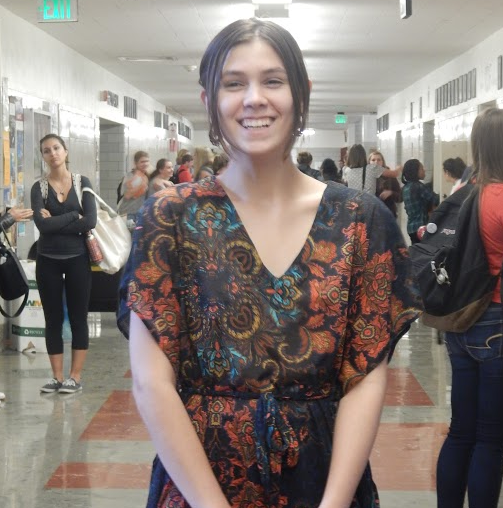The smallest minority; Student embraces her Native American blood

Jozy Belay is part of the smallest minority group of students at Lincoln, given .2 percent of the 2014-15 student body was Native American.
Senior Jozy Belay is one in a thousand; more specifically, one in about 1,700. Registered as a member of a Native American tribe, she is in the smallest minority group at Lincoln – just .2 percent of LHS students identify as Native American. She is also the leader of the smallest student union at Lincoln.
She was born and raised in Cambridge, Massachusetts. Her heritage comes from her mother, who is part Cherokee and her father, a 100 percent Laguna tribal member whose homeland is in New Mexico. Belay and her family moved to Portland in August 2012, her freshman year where she found a tiny community of Native Americans at Lincoln.
“I do not feel the immediate sense of being a minority because I’m commonly perceived as Caucasian due to my complexion,” she says. “When I look at the culture I come from, I do feel like a minority because of the underrepresentation of my people. It’s as if my origin and my ancestry is like a ghost in the background, faintly present and difficult to detect.”
Though she doesn’t feel like a minority, she is still a part of the smallest minority group at Lincoln. Last school year, for example, Native students accounted for .2 percent of the school’s total population of 1,600 (about three students). Those three students were also the sole members of the Native American Student Union, still the smallest club at Lincoln.
Two graduated and moved on to college, leaving Belay as the only remaining member of the club. But as the new leader of the union, she is driven towards sharing her heritage to those who do not have her direct connection to pre-Columbian America.
“Native Americans have been extremely underrepresented in history and today – decades, even centuries, of history that has been almost completely lost,” Belay said. Books on North American history focus on the country after Christopher Columbus, she says, “It would be a treasure for people to know more about it.”
In the first meeting of the club this school year, Belay played a video of a poem titled “Bad Indians” by Ryan Red Corn for the group of eight students who showed up. The video shows Natives sarcastically saying they have been “bad” because they have not conformed to society or have previously revolted.
“The poem mainly talks about the hardships Native Americans faced in the past,” Belay said. “A lot of what’s in it pertains to challenges we face todayl.”
Belay also shared with new members that Portland became one of eight U.S. cities to adopt Indigenous Peoples Day on Oct. 12, the same day as Columbus Day. She mentioned she planned some traditional practices to commemorate the new holiday.
“I’m going to go to my backyard, be in nature for a little bit, burn some sage to burn away all the bad spirits, and probably talk to my father about his days on the reservation,” Belay said.
Belay is still hopeful that she will be able to organize more meetings and possibly even take the members on some field trips to conventions and pow-wows, social gatherings with singing and dancing.
”The club’s main basis is going to be learning about Native Americans because it’s a really beautiful culture.”
